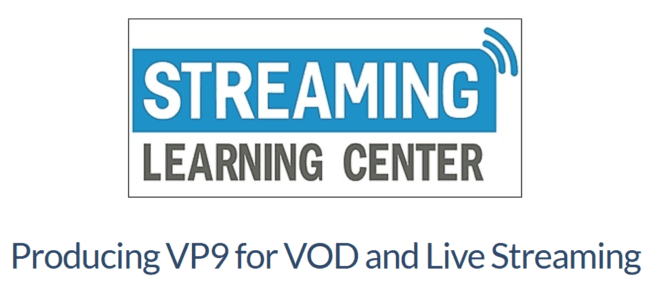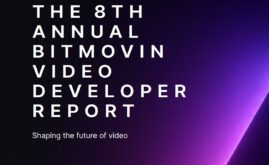This webinar provided an overview of producing VP9 for VOD and live streaming. You can watch the recorded video below. Click here to download the handout.
Description: The VP9 codec is at an interesting inflection point. On the one hand, VP9 provides better quality than H.264, and similar quality but much better browser support than HEVC. On the other, AV1 plays in most of the same browsers as VP9, though AV1’s encoding times are much, much longer, and AV1 doesn’t (yet) share VP9’s support in the installed base of SmartTV and OTT boxes.
Interest in VP9 production seems high. In the Bitmovin 2020 Video Developer Report, 12% of respondents already supported VP9, and 18% planned to add VP9 support in 2021. VP9-related articles on the Streaming Learning Center are pulling plenty of viewers. This webinar will help producers ascertain VP9’s viability and optimal implementation options.
Specifically, the webinar starts by presenting how VP9 compares to H.264, HEVC, and AV1 quality and performance-wise. Then it reviews options for live encoding and transcoding and VOD encoding. It concludes with a look at the most relevant compatibility and quality-related VP9 configuration options and provides an optimized FFmpeg command string for live and VOD encoding.
What you will learn:
- What VP9 is and where VP9-encoded videos play
- How VP9 quality compares to H.264, HEVC, and AV1
- What options are available for live VP9 encoding (origination) and transcoding
- What options are available for VOD encoding
- The optimal FFmpeg configuration options for live encoding and VOD transcoding
- FFmpeg command strings for creating an encoding ladder for DASH distribution
Who should attend:
- Companies exploring the possibility of deploying VP9
- Companies who have decided to deploy VP9 and are seeking the optimal encoding configuration.
Jan Ozer
Owner, Streaming Learning Center
Author: Streaming Media 101: Technical Onboarding for Streaming Media Professionals (online course)
 Streaming Learning Center Where Streaming Professionals Learn to Excel
Streaming Learning Center Where Streaming Professionals Learn to Excel










